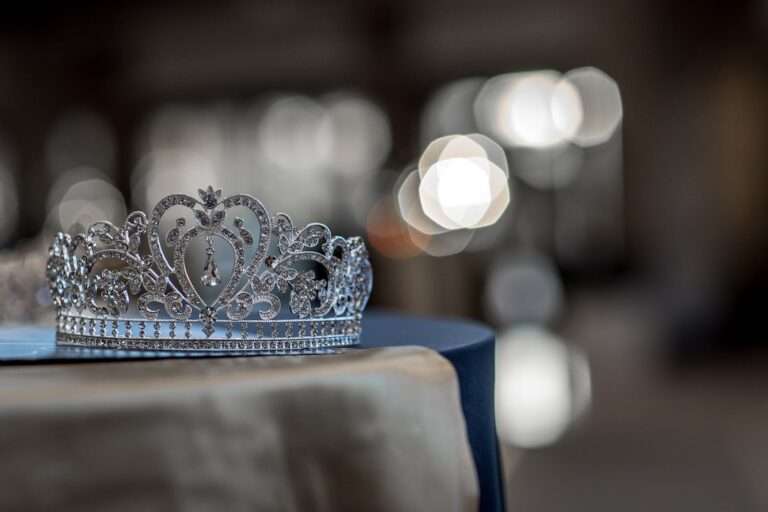Exploring the Deeper Meanings: Symbolism of Water in Literature and Art
Symbolism is a powerful tool used in literature and art to convey deeper meanings and evoke emotions. It allows artists and writers to communicate complex ideas and concepts in a way that is accessible and relatable to the audience. By using symbols, they can tap into the universal human experience and create a connection between the work and the viewer or reader.
Symbols can take many forms, such as objects, colors, animals, or elements of nature. They often carry multiple layers of meaning, allowing for different interpretations and adding depth to the work. One of the most commonly used symbols in literature and art is water.
Key Takeaways
- Symbolism plays an important role in literature and art.
- Water is a significant archetype in mythology and culture.
- Water is often used as a symbol of life, renewal, and transformation in literature and art.
- The duality of water is represented as a source of both life and death.
- Water is a symbol of emotional depth and intensity in literature and art.
The Archetype of Water: Its Significance in Mythology and Culture
Water is a universal symbol that holds great significance in mythology and culture across different civilizations. It is often associated with life, purification, renewal, and transformation. In many creation myths, water is seen as the source of all life, representing the primordial state from which everything emerges.
In ancient Egyptian mythology, the Nile River was considered a sacred symbol of life and fertility. It was believed to be the lifeblood of the land, providing nourishment for crops and sustaining the people. Similarly, in Hindu mythology, the river Ganges is considered a holy river that purifies those who bathe in its waters.
Water also plays a significant role in Native American culture. For example, in Navajo mythology, water is seen as a symbol of healing and transformation. The Navajo people believe that water has the power to cleanse both physically and spiritually.
Water as a Symbol of Life and Renewal in Literature and Art
In literature and art, water is often used as a symbol of life and renewal. It represents the cyclical nature of existence, the constant flow of time, and the potential for growth and change.
One example of water as a symbol of life and renewal is found in Ernest Hemingway’s novel “The Old Man and the Sea.” The protagonist, Santiago, spends days at sea battling a marlin. When he finally catches the fish, he ties it to the side of his boat and begins his journey back to shore. Along the way, sharks attack the marlin, leaving only its skeleton. Despite this loss, Santiago finds solace in the sea, which represents the eternal cycle of life and renewal.
In art, water is often depicted as a source of life and vitality. For instance, in Claude Monet’s famous series of water lilies paintings, he captures the beauty and tranquility of a pond filled with blooming water lilies. The water in these paintings symbolizes the life force that sustains and nourishes the plants.
The Duality of Water: Its Symbolism as a Source of Life and Death
| Symbolism | Meaning | Examples |
|---|---|---|
| Life | Water is essential for all living beings to survive | Drinking water, irrigation for crops, aquatic ecosystems |
| Death | Water can also be destructive and deadly | Flooding, tsunamis, drowning |
| Purification | Water is often used in religious and spiritual rituals to cleanse and purify | Baptism, ablution, holy water |
| Renewal | Water can represent a fresh start or new beginning | Spring rain, melting snow, baptism |
| Balance | Water can represent the delicate balance of nature | Wetlands, estuaries, coral reefs |
Water is a symbol that embodies both life and death. It has the power to give life, but it can also be destructive and deadly.
In literature, water is often used to represent the duality of life and death. In Herman Melville’s novel “Moby-Dick,” for example, the ocean is portrayed as both a source of life and a place of danger. The characters in the novel are constantly at the mercy of the sea, which can provide them with sustenance or swallow them whole.
Similarly, in art, water is often depicted as both beautiful and treacherous. The famous painting “The Great Wave off Kanagawa” by Katsushika Hokusai portrays a massive wave about to crash down on a boat. The wave represents the destructive power of nature, while also showcasing its beauty and awe-inspiring force.
Water as a Symbol of Transformation and Change in Literature and Art
Water is often used as a symbol of transformation and change in literature and art. It represents the fluidity of life and the ability to adapt and evolve.
In literature, water is frequently used to symbolize personal growth and transformation. In F. Scott Fitzgerald’s novel “The Great Gatsby,” the character of Jay Gatsby is often associated with water. His mansion is located on the shores of a lake, and he throws extravagant parties by his swimming pool. This use of water symbolizes Gatsby’s desire for change and his pursuit of a new identity.
In art, water is often used to represent the transformative power of nature. The painting “The Starry Night” by Vincent van Gogh depicts a night sky filled with swirling stars and a crescent moon reflected in a calm body of water. The water in this painting symbolizes the transformative power of the night sky, which can inspire awe and wonder.
The Symbolism of Water in Religious Texts and Iconography

Water holds great symbolism in religious texts and iconography. It is often associated with purification, rebirth, and spiritual cleansing.
In Christianity, water is used in the sacrament of baptism to symbolize the washing away of sins and the rebirth into a new life in Christ. In the Bible, there are numerous references to water as a symbol of spiritual cleansing and renewal.
In Islam, water is also seen as a symbol of purification. Muslims perform ablutions before prayer, washing their hands, face, and feet as a way to cleanse themselves both physically and spiritually.
Water as a Symbol of Purification and Cleansing in Literature and Art
Water is frequently used as a symbol of purification and cleansing in literature and art. It represents the ability to wash away impurities and start anew.
In literature, water is often used to symbolize a fresh start or a clean slate. In Nathaniel Hawthorne’s novel “The Scarlet Letter,” for example, the character Hester Prynne is forced to wear a scarlet letter as a symbol of her sin. Towards the end of the novel, she stands on the scaffold by the sea and removes the letter, throwing it into the water. This act symbolizes her desire for redemption and her hope for a new beginning.
In art, water is often used to represent purification and cleansing. The painting “The Baptism of Christ” by Piero della Francesca depicts the biblical scene of Jesus being baptized by John the Baptist in the Jordan River. The water in this painting symbolizes the cleansing of sin and the beginning of Jesus’ ministry.
The Symbolism of Water in Dreams and the Unconscious Mind
Water is a common symbol in dreams and is often associated with emotions, the unconscious mind, and the depths of the psyche.
In dreams, water can take on different forms and have various meanings. For example, calm and clear water may represent tranquility and emotional stability, while turbulent or murky water may symbolize emotional turmoil or unresolved issues.
Water can also represent the unconscious mind and the depths of the psyche. It is often associated with emotions that are hidden or repressed. In dreams, diving into water or being submerged can symbolize a journey into the unconscious or a desire to explore one’s emotions more deeply.
Water as a Symbol of Emotional Depth and Intensity in Literature and Art
Water is frequently used as a symbol of emotional depth and intensity in literature and art. It represents the vastness of human emotions and the power they hold over us.
In literature, water is often used to convey intense emotions such as love, longing, or grief. In Emily Bronte’s novel “Wuthering Heights,” for example, the character Catherine Earnshaw describes her love for Heathcliff as “an eternal rock beneath a restless sea.” This metaphor compares her love to an unyielding force that is both powerful and tumultuous.
In art, water is often used to depict emotional depth and intensity. The painting “The Scream” by Edvard Munch portrays a figure standing on a bridge, screaming in anguish. The swirling colors and distorted forms in the painting create a sense of emotional turmoil and intensity.
The Enduring Significance of Water as a Symbol in Literature and Art
Water remains an enduring symbol in literature and art due to its universal significance and the many layers of meaning it carries. It represents life, renewal, transformation, purification, and emotional depth. Whether used to convey personal growth, spiritual cleansing, or the duality of life and death, water continues to captivate audiences and evoke powerful emotions.
Through its use as a symbol, water allows artists and writers to tap into the collective unconscious and explore the depths of the human experience. It serves as a powerful tool for communication and connection, bridging the gap between the artist or writer and the audience. As long as humans continue to seek meaning and understanding in their lives, water will remain a timeless symbol in literature and art.
If you’re interested in exploring more symbolism, you might want to check out this article on the symbolism of a snake. Snakes have long been associated with various meanings and interpretations across different cultures and religions. From representing transformation and rebirth to symbolizing wisdom and healing, the snake holds a significant place in symbolism. To delve deeper into this intriguing topic, click here: Symbolism of a Snake.
FAQs
What is symbolism?
Symbolism is the use of symbols to represent ideas or qualities.
What is the significance of water in symbolism?
Water is a common symbol in many cultures and religions, representing purity, life, and renewal. It can also represent emotions, the subconscious, and the flow of life.
What are some common water symbols?
Some common water symbols include oceans, rivers, rain, and tears. These symbols can represent different things depending on the context, such as the power of nature, the passage of time, or emotional release.
What are some examples of water symbolism in literature?
In literature, water can be used to symbolize many things, such as rebirth in “The Great Gatsby” by F. Scott Fitzgerald, cleansing in “The Scarlet Letter” by Nathaniel Hawthorne, and the unconscious mind in “Heart of Darkness” by Joseph Conrad.
What are some examples of water symbolism in art?
In art, water can be used to symbolize many things, such as purity in “The Birth of Venus” by Sandro Botticelli, the power of nature in “The Great Wave off Kanagawa” by Katsushika Hokusai, and the subconscious in “The Persistence of Memory” by Salvador Dali.
What are some examples of water symbolism in religion?
In religion, water can be used to symbolize many things, such as baptism in Christianity, purification in Hinduism, and rebirth in Buddhism. Water is also a common symbol in many creation stories, representing the beginning of life.





